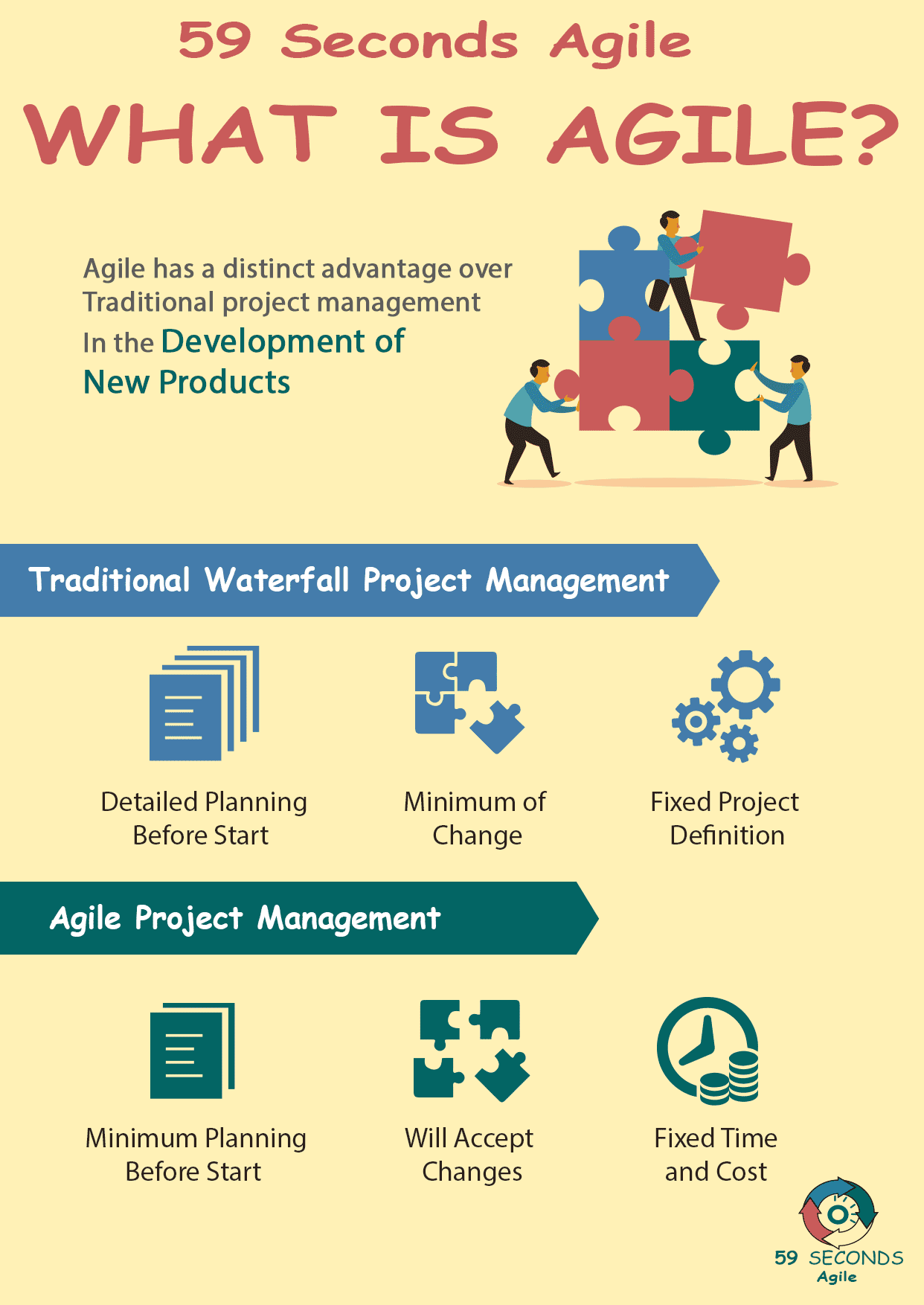
What is Agile to the Scrum Master?
While traditional project management is still widely used, the benefits of an Agile approach to running a project are becoming more and more recognized. Where Agile has a distinct advantage over classic project management is the development of new products. There is always uncertainty when taking an idea from concept through to a delivered reality. This is especially true when it is something as intangible as a piece of software. The one certainty is that there will be changes required along the journey, and this is what Agile recognizes. A classic project has detailed planning before the project is started, and the successful project will reach completion with the minimum of change in scope and direction.
An Agile project is started with the minimum of planning. The project will accept changes, as long as they are critical to delivering a viable product. The project must also be judged as successful by the level of customer satisfaction. And all this is achieved without a project manager.
Does this mean that Agile Projects have no Project Management?
On the contrary, Agile projects are very tightly managed. Firstly the project and its components and activities are all time-boxed. This enables the team to focus on what has to be done, as the end date is fixed and immutable. The size and capacity of the team are also fixed; the only variable is changed to the product definition. The management of the project and the responsibility for successful delivery is a team effort, where each team member accepts the part they play in project success, thus removing the need for a project manager.
Work is not allocated; a team member selects their next work item by taking it from the sprint backlog or the Kanban board, depending on the Agile framework that is being used. While the project manager plays no part in an Agile project, there are 2 core roles in Scrum that are essential: the Product Owner, who is responsible for the product and all communications external to the project with stakeholders and other parties; and the Scrum Master, who is concerned with the internal communications and project processes.

The Role of the Scrum Master
The Scrum Master role has much in common with the coach in a Centre of Excellence. Their role is to look after the interests of the team and remove any obstacles to their ability to deliver, as well as being the steward of the Scrum and Agile processes and principles. This is a facilitator’s role, not a director’s role, and has little in common with a Project Manager in a traditional project. The Scrum Master facilitates the required Scrum meetings (or “ceremonies”) and ensures that everyone adheres to the time limit for the meeting, as the meetings are also time-boxed. They also educates the team (and stakeholders) in the ways of Scrum. The Scrum Master plays a vital role throughout the Scrum Processes, starting with the “Initiate” Process.
How the Scrum Master adds Value to the Initiate process
One of the first activities in the Initiate process, after the Project Vision has been established, is the appointment of the Scrum Master. The Scrum Master has a major part to play in the Initiate process:-
Form Scrum Team
When Forming the Scrum Team, while the Product Owner has the chief responsibility for choosing the members of the Scrum Team, this is done in consultation with the Scrum master and HR. During this process, the Scrum Master needs to assess how familiar the selected team members are with Scrum and what the training needs are.
Depending on the complexity of the project, the team members’ skills and the number of teams, there may be a requirement for the Scrum Master to draw up a team building plan and a collaboration plan for inter-team co-ordination and communications. This could be done with the help of the Chief Scrum Master, Program Scrum Master and/or Portfolio Scrum Master, based on the project size and scope and the organizational setup.
During the project, the Scrum Master will need to select one or more approaches to build a cohesive and productive team, such as using the Tuckman 4-stage model of teams. It is recommended that he learns other philosophies, like Belbin’s model, so that he can apply what works best for the team he is currently managing.

